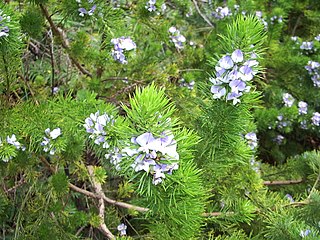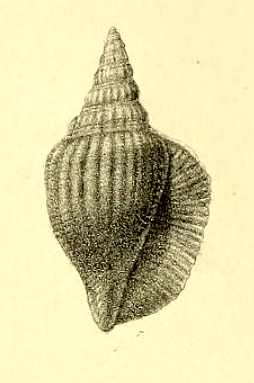
Thuja plicata is a large evergreen coniferous tree in the family Cupressaceae, native to the Pacific Northwest of North America. Its common name is western redcedar in the U.S. or western red cedar in the UK, and it is also called pacific red cedar, giant arborvitae, western arborvitae, just cedar, giant cedar, or shinglewood. It is not a true cedar of the genus Cedrus. T. plicata is the largest species in the genus Thuja, growing up to 70 metres (230 ft) tall and 7 metres (23 ft) in diameter. It mostly grows in areas that experience a mild climate with plentiful rainfall, although it is sometimes present in drier areas on sites where water is available year-round, such as wet valley bottoms and mountain streamsides. The species is shade-tolerant and able to establish in forest understories and is thus considered a climax species. It is a very long-lived tree, with some specimens reaching ages of well over 1,000 years.

Psoralea is a genus in the legume family (Fabaceae) with 111 species of shrubs, trees, and herbs native to southern and eastern Africa, ranging from Kenya to South Africa. In South Africa they are commonly referred to as fountainbush (English); fonteinbos, bloukeur, or penwortel (Afrikaans); and umHlonishwa (Zulu).

The gray sac-winged bat is a species in the family Emballonuridae which comprises the 51 species of sac-winged bats. It is found in Mexico from Baja California Sur and Sonora to Guatemala, El Salvador, Honduras, Nicaragua, Costa Rica and northern Colombia, at elevations up to 1,500 metres (4,900 ft).

Psoralea pinnata is an erect evergreen shrub or small tree that grows to a height between 1.5 metres (5 ft) and 4 metres (13 ft) tall.

Spathoglottis plicata, commonly known as the Philippine ground orchid, or large purple orchid is an evergreen, terrestrial plant with crowded pseudobulbs, three or four large, pleated leaves and up to forty resupinate, pink to purple flowers. It is found from tropical and subtropical Asia to Australia and the western Pacific including Tonga and Samoa.

Amentoflavone is a biflavonoid constituent of a number of plants including Ginkgo biloba, Chamaecyparis obtusa (hinoki), Biophytum sensitivum, Selaginella tamariscina, Hypericum perforatum and Xerophyta plicata.

Dolomena plicata, common name the pigeon conch, is a species of medium-sized to large sea snail, a marine gastropod mollusk in the family Strombidae, the true conchs.

The tribe Psoraleeae is one of the subdivisions of the plant family Fabaceae. Recent phylogenetics has this tribe nested within tribe Phaseoleae.

Plicadin is a coumestan found in the herb Psoralea plicata.
Cullen plicatum, synonym Psoralea plicata, is a herb species in the genus Psoralea. It is native from northern Africa to north-west India and to South Africa.

Bituminaria bituminosa, the Arabian pea or pitch trefoil, is a perennial Mediterranean herb species in the genus Bituminaria.

Plicatula is a genus of saltwater clams, marine bivalve molluscs, known commonly as kitten's paws or kittenpaws in the family Plicatulidae.

Plicatin A is a hydroxycinnamic acid found in Psoralea plicata.

Bakuchiol is a meroterpenoid in the class terpenophenol.

Psoralidin is a natural phenolic compound found in the seeds of Psoralea corylifolia.
Agonopterix posticella is a moth in the family Depressariidae. It was described by Walsingham in 1881. It is found in North America, where it has been recorded from Washington to California and in Wyoming and Colorado.

Drupanol is a naturally occurring phenol that has been isolated from the seeds of Psoralea drupaceae. Although drupanol is sometimes said to be the same compound as bakuchiol, the two compounds are in fact distinct; they have the same molecular formula and weight but different chemical structures and hence are structural isomers. Bakuchiol has been found to possess antiandrogenic activity in vitro.














